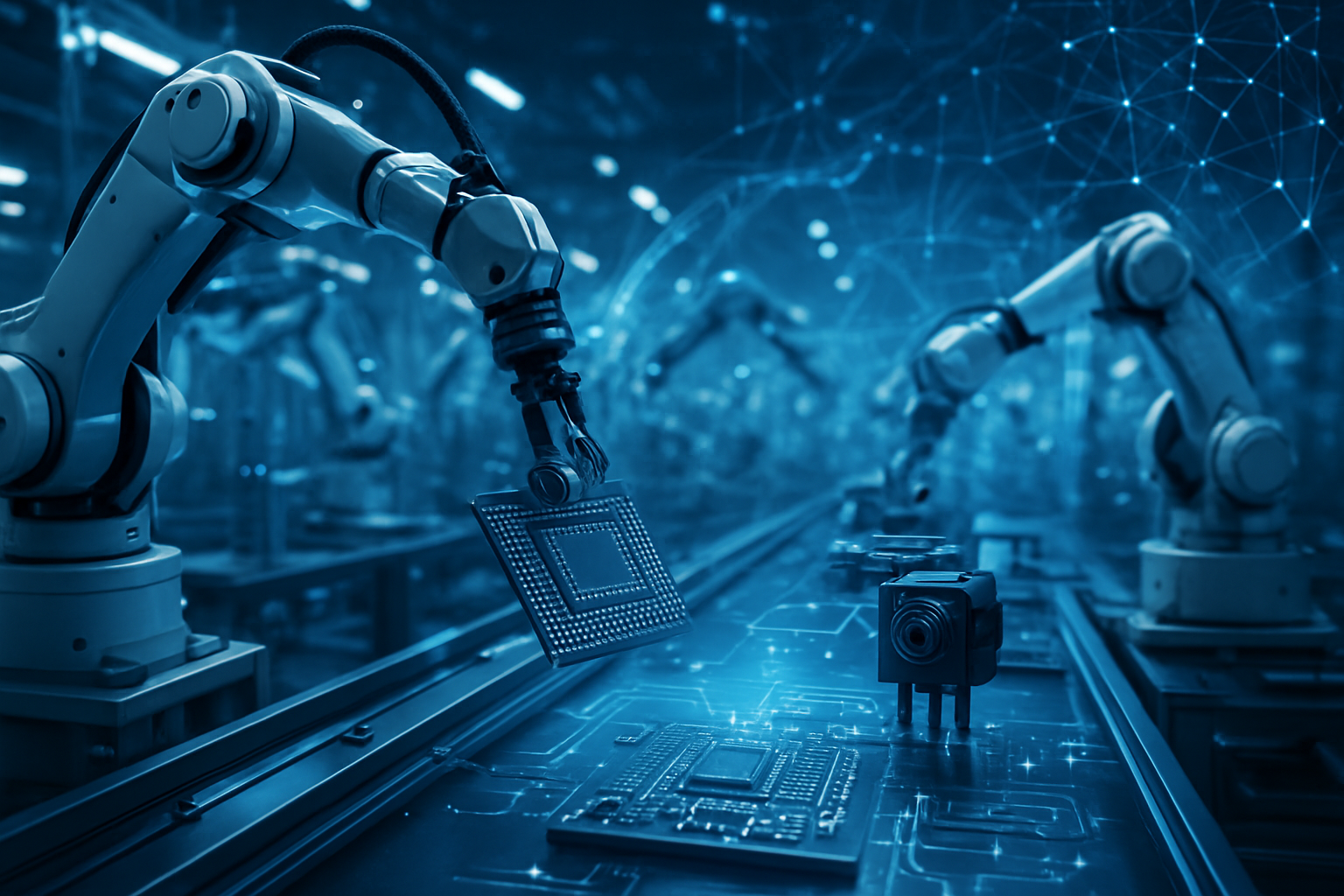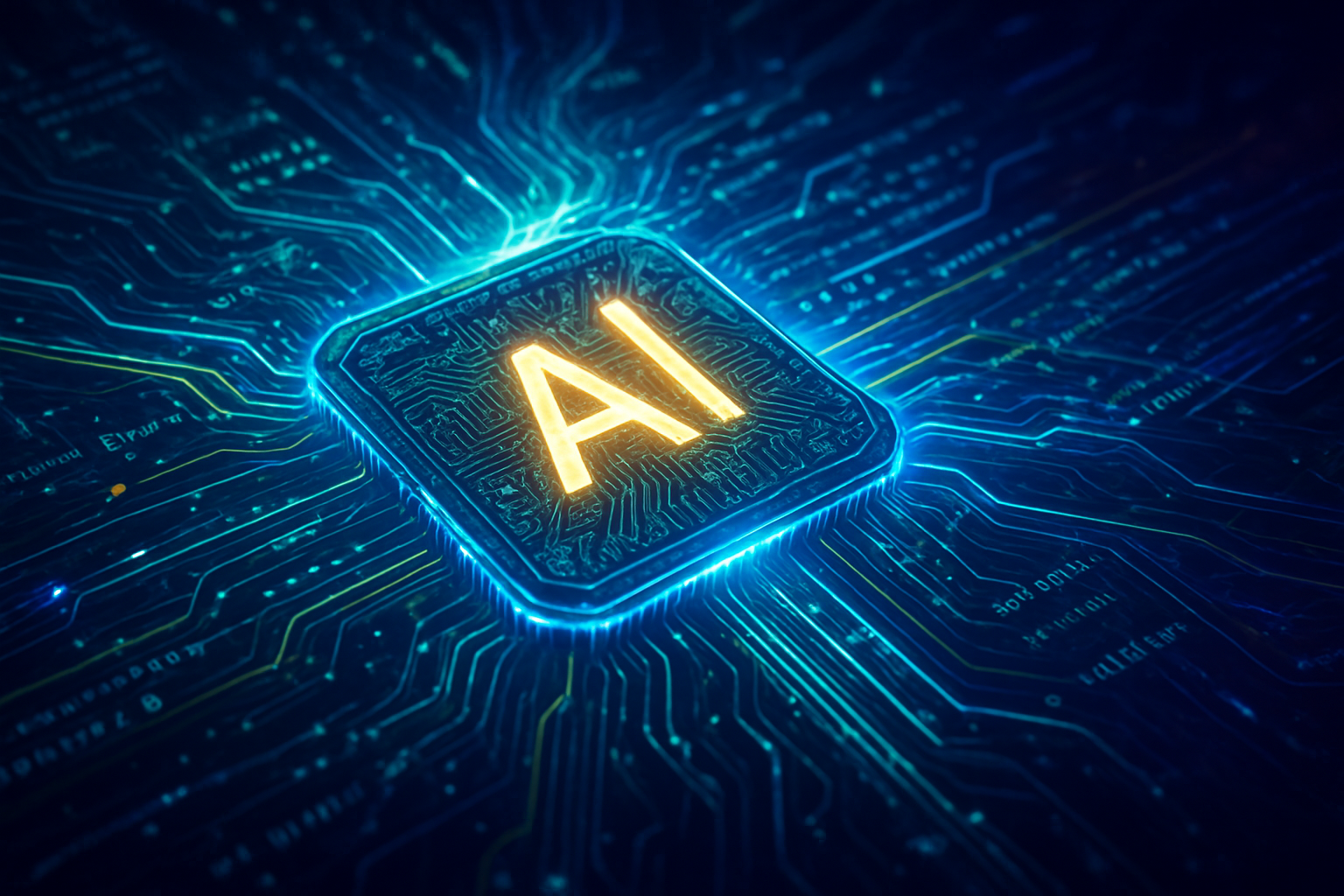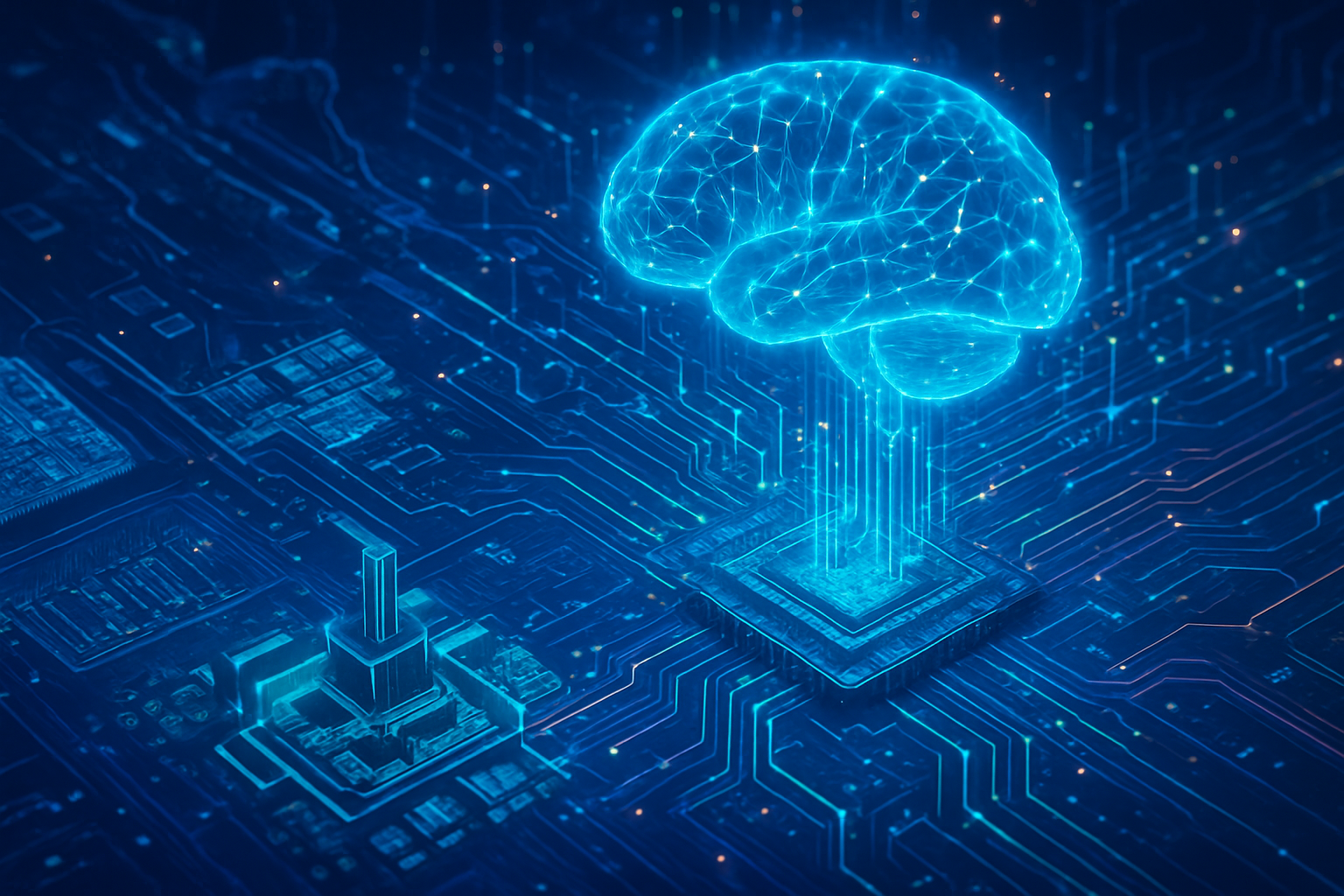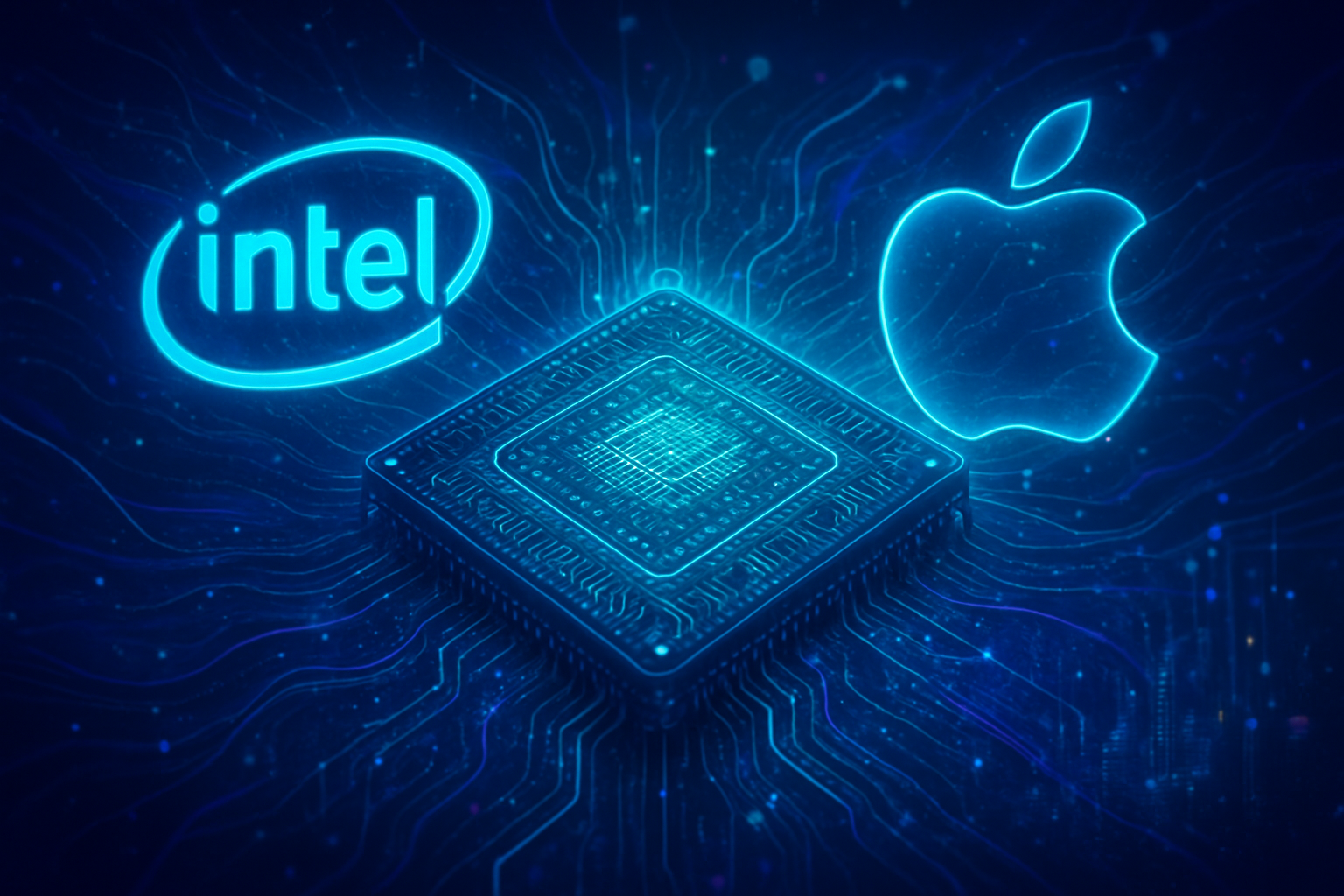The artificial intelligence semiconductor sector is rapidly emerging as the undisputed backbone of the global AI revolution, transitioning from a specialized niche to an indispensable foundation for modern technology. Its immediate significance is profound, serving as the primary catalyst for growth across the entire semiconductor industry, while its future outlook projects a period of unprecedented expansion and innovation, making it not only a critical area for technological advancement but also a paramount frontier for strategic investment.
Driven by the insatiable demand for processing power from advanced AI applications, particularly large language models (LLMs) and generative AI, the sector is currently experiencing a "supercycle." These specialized chips are the fundamental building blocks, providing the computational muscle and energy efficiency essential for processing vast datasets and executing complex algorithms. This surge is already reshaping the semiconductor landscape, with AI acting as a transformative force within the industry itself, revolutionizing chip design, manufacturing, and supply chains.
Technical Foundations of the AI Revolution
The AI semiconductor sector's future is defined by a relentless pursuit of specialized compute, minimizing data movement, and maximizing energy efficiency, moving beyond mere increases in raw computational power. Key advancements are reshaping the landscape of AI hardware. Application-Specific Integrated Circuits (ASICs), such as Google's (NASDAQ: GOOGL) Tensor Processing Units (TPUs) and various Neural Processing Units (NPUs) integrated into edge devices, exemplify this shift. These custom-built chips are meticulously optimized for specific AI tasks, like tensor operations crucial for neural networks, offering unparalleled efficiency—often hundreds of times more energy-efficient than general-purpose GPUs for their intended purpose—though at the cost of flexibility. NPUs, in particular, are enabling high-performance, energy-efficient AI capabilities directly on smartphones and IoT devices.
A critical innovation addressing the "memory wall" or "von Neumann bottleneck" is the adoption of High-Bandwidth Memory (HBM) and memory-centric designs. Modern AI accelerators can stream multiple terabytes per second from stacked memory, with technologies like HBM3e delivering vastly higher capacity and bandwidth (e.g., NVIDIA's (NASDAQ: NVDA) H200 with 141GB of memory at 4.8 terabytes per second) compared to conventional DDR5. This focus aims to keep data on-chip as long as possible, significantly reducing the energy and time consumed by data movement between the processor and memory. Furthermore, advanced packaging and chiplet technology, which breaks down large monolithic chips into smaller, specialized components interconnected within a single package, improves yields, reduces manufacturing costs, and enhances scalability and energy efficiency. 2.5D integration, placing multiple chiplets beside HBM stacks on advanced interposers, further shortens interconnects and boosts performance, though advanced packaging capacity remains a bottleneck.
Beyond these, neuromorphic computing, inspired by the human brain, is gaining traction. Chips like Intel's (NASDAQ: INTC) Loihi and IBM's (NYSE: IBM) TrueNorth and NorthPole utilize artificial neurons and synapses, often incorporating memristive devices, to perform complex computations with significantly lower power consumption. These excel in pattern recognition and sensory processing. In-Memory Computing (IMC) or Compute-in-Memory (CIM) is another transformative approach, moving computational elements directly into memory units to drastically cut data transfer costs. A recent development in this area, using ferroelectric field-effect transistors (FeFETs), reportedly achieves 885 TOPS/W, effectively doubling the power efficiency of comparable in-memory computing by eliminating the von Neumann bottleneck. The industry also continues to push process technology to 3nm and 2nm nodes, alongside new transistor architectures like 'RibbonFet' and 'Gate All Around,' to further enhance performance and energy efficiency.
These advancements represent a fundamental departure from previous approaches. Unlike traditional CPUs that rely on sequential processing, AI chips leverage massive parallel processing for the simultaneous calculations critical to neural networks. While CPUs are general-purpose, AI chips are domain-specific architectures (DSAs) tailored for AI workloads, optimizing speed and energy efficiency. The shift from CPU-centric to memory-centric designs, coupled with integrated high-bandwidth memory, directly addresses the immense data demands of AI. Moreover, AI chips are engineered for superior energy efficiency, often utilizing low-precision arithmetic and optimized data movement. The AI research community and industry experts acknowledge a "supercycle" driven by generative AI, leading to intense demand. They emphasize that memory, interconnect, and energy constraints are now the defining bottlenecks, driving continuous innovation. There's a dual trend of leading tech giants investing in proprietary AI chips (e.g., Apple's (NASDAQ: AAPL) M-series chips with Neural Engines) and a growing advocacy for open design and community-driven innovation like RISC-V. Concerns about the enormous energy consumption of AI models are also pushing for more energy-efficient hardware. A fascinating reciprocal relationship is emerging where AI itself is being leveraged to optimize semiconductor design and manufacturing through AI-powered Electronic Design Automation (EDA) tools. The consensus is that the future will be heterogeneous, with a diverse mix of specialized chips, necessitating robust interconnects and software integration.
Competitive Landscape and Corporate Strategies in the AI Chip Wars
Advancements in AI semiconductors are profoundly reshaping the landscape for AI companies, tech giants, and startups, driving intense innovation, competition, and new market dynamics. The symbiotic relationship between AI's increasing computational demands and the evolution of specialized hardware is creating a "supercycle" in the semiconductor industry, with projections for global chip sales to soar to $1 trillion by 2030. AI companies are direct beneficiaries, leveraging more powerful, efficient, and specialized semiconductors—the backbone of AI systems—to create increasingly complex and capable AI models like LLMs and generative AI. These chips enable faster training times, improved inference capabilities, and the ability to deploy AI solutions at scale across various industries.
Tech giants are at the forefront of this transformation, heavily investing in designing their own custom AI chips. This vertical integration strategy aims to reduce dependence on external suppliers, optimize chips for specific cloud services and AI workloads, and gain greater control over their AI infrastructure, costs, and scale. Google (NASDAQ: GOOGL) continues to advance its Tensor Processing Units (TPUs), with the latest Trillium chip (TPU v6e) offering significantly higher peak compute performance. Amazon Web Services (AWS) develops its own Trainium chips for model training and Inferentia chips for inference. Microsoft (NASDAQ: MSFT) has introduced its Azure Maia AI chip and Arm-powered Azure Cobalt CPU, integrating them into its cloud server stack. Meta Platforms (NASDAQ: META) is also developing in-house chips, and Apple (NASDAQ: AAPL) utilizes its Neural Engine in M-series chips for on-device AI, reportedly developing specialized chips for servers to support its Apple Intelligence platform. These custom chips strengthen cloud offerings and accelerate AI monetization.
For startups, advancements present both opportunities and challenges. AI is transforming semiconductor design itself, with AI-driven tools compressing design and verification times, and cloud-based design tools democratizing access to advanced resources. This can cut development costs by up to 35% and shorten chip design cycles, enabling smaller players to innovate in niche areas like edge computing (e.g., Hailo's Hailo-8 chip), neuromorphic computing, or real-time inference (e.g., Groq's Language Processing Unit or LPU). However, developing a leading-edge chip can still take years and cost over $100 million, and a projected shortage of skilled workers complicates growth, making significant funding a persistent hurdle.
Several types of companies are exceptionally well-positioned to benefit. AI semiconductor manufacturers like NVIDIA (NASDAQ: NVDA) remain the undisputed leader with its Blackwell GPU Architecture (B200, GB300 NVL72) and pervasive CUDA software ecosystem. AMD (NASDAQ: AMD) is a formidable challenger with its Instinct MI300 series GPUs and growing presence in AI PCs and data centers. Intel (NASDAQ: INTC), while playing catch-up in GPUs, is a major player with AI-optimized Xeon Scalable CPUs and Gaudi2 AI accelerators, also investing heavily in foundry services. Qualcomm (NASDAQ: QCOM) is emerging with its Cloud AI 100 chip, demonstrating strong performance in server queries per watt, and Broadcom (NASDAQ: AVGO) has made a significant pivot into AI chip production, particularly with custom AI chips and networking equipment. Foundries and advanced packaging companies like TSMC (NYSE: TSM) and Samsung (KRX: 005930) are critical, with surging demand for advanced packaging like CoWoS. Hyperscalers with custom silicon, EDA vendors, and specialized AI chip startups like Groq and Cerebras Systems also stand to gain.
The sector is intensely competitive. NVIDIA faces increasing challenges from tech giants developing in-house chips and AMD's rapidly gaining market share with its competitive GPUs and open-source AI software stack (ROCm). The "AI chip war" also reflects geopolitical tensions, with nations pushing for regional self-sufficiency and export controls shaping the landscape. A "model layer squeeze" is occurring, where AI labs focused solely on developing models face rapid commoditization, while infrastructure and application owners (often tech giants) capture more value. The sheer demand for AI chips can lead to supply chain disruptions, shortages, and escalating costs. However, AI is also transforming the semiconductor industry itself, with AI algorithms embedded in design and fabrication processes, potentially democratizing chip design and enabling more efficient production. The semiconductor industry is capturing an unprecedented share of the total value in the AI technology stack, signaling a fundamental shift. Companies are strategically positioning themselves, with NVIDIA aiming to be the "all-in-one supplier," AMD focusing on an open, cost-effective infrastructure, Intel working to regain leadership through foundry services, and hyperscalers embracing vertical integration. Startups are carving out niches with specialized accelerators, while EDA companies integrate AI into their tools.
Broader Implications and Societal Shifts Driven by AI Silicon
The rapid advancements in AI semiconductors are far more than mere incremental technological improvements; they represent a fundamental shift with profound implications across the entire AI landscape, society, and geopolitics. This evolution is characterized by a deeply symbiotic relationship between AI and semiconductors, where each drives the other's progress. These advancements are integral to the broader AI landscape, acting as its foundational enablers and accelerators. The burgeoning demand for sophisticated AI applications, particularly generative AI, is fueling an unprecedented need for semiconductors that are faster, smaller, and more energy-efficient. This has led to the development of specialized AI chips like GPUs, TPUs, and ASICs, which are optimized for the parallel processing required by machine learning and agentic AI workloads.
These advanced chips are enabling a future where AI is more accessible, scalable, and ubiquitous, especially with the rise of edge AI solutions. Edge AI, where processing occurs directly on devices like IoT sensors, autonomous vehicles, and wearable technology, necessitates high-performance chips with minimal power consumption—a requirement directly addressed by current semiconductor innovations such as system-on-chip (SoC) architectures and advanced process nodes (e.g., 3nm and 2nm). Furthermore, AI is not just a consumer of advanced semiconductors; it's also a transformative force within the semiconductor industry itself. AI-powered Electronic Design Automation (EDA) tools are revolutionizing chip design by automating repetitive tasks, optimizing layouts, and significantly accelerating time-to-market. In manufacturing, AI enhances efficiency through predictive maintenance, real-time process optimization, and defect detection, and it improves supply chain management by optimizing logistics and forecasting material shortages. This integration creates a "virtuous cycle of innovation" where AI advancements are increasingly dependent on semiconductor innovation, and vice versa.
The societal impacts of AI semiconductor advancements are far-reaching. AI, powered by these advanced semiconductors, is driving automation and efficiency across numerous sectors, including healthcare, transportation, smart infrastructure, manufacturing, energy, and agriculture, fundamentally changing how people live and work. While AI is creating new roles, it is also expected to cause significant shifts in job skills, potentially displacing some existing jobs. AI's evolution, facilitated by these chips, promises more sophisticated generative models that can lead to personalized education and advanced medical imaging. Edge AI solutions make AI applications more accessible even in remote or underserved regions and empower wearable devices for real-time health monitoring and proactive healthcare. AI tools can also enhance safety by analyzing behavioral patterns to identify potential threats and optimize disaster response.
Despite the promising outlook, these advancements bring forth several significant concerns. Technical challenges include integrating AI systems with existing manufacturing infrastructures, developing AI models that handle vast data, and ensuring data security and intellectual property. Fundamental technical limitations like quantum tunneling and heat dissipation at nanometer scales also persist. Economically, the integration of AI demands heavy investment in infrastructure, and the rising costs of semiconductor fabrication plants (fabs) make investment difficult, alongside high development costs for AI itself. Ethical issues surrounding bias, privacy, and the immense energy consumption of AI systems are paramount, as is the potential for workforce displacement. Geopolitically, the semiconductor industry's reliance on geographically concentrated manufacturing hubs, particularly in East Asia, exposes it to risks from tensions and disruptions, leading to an "AI chip war" and strategic rivalry. The unprecedented energy demands of AI are also expected to strain electric utilities and necessitate a rethinking of energy infrastructure.
The current wave of AI semiconductor advancements represents a distinct and accelerated phase compared to earlier AI milestones. Unlike previous AI advancements that often relied primarily on algorithmic breakthroughs, the current surge is fundamentally driven by hardware innovation. It demands a re-architecture of computing systems to process vast quantities of data at unprecedented speeds, making hardware an active co-developer of AI capabilities rather than just an enabler. The pace of adoption and performance is also unprecedented; generative AI has achieved adoption levels in two years that took the personal computer nearly a decade and even outpaced the adoption of smartphones, tablets, and the internet. Furthermore, generative AI performance is doubling every six months, a rate dubbed "Hyper Moore's Law," significantly outpacing traditional Moore's Law. This era is also defined by the development of highly specialized AI chips (GPUs, TPUs, ASICs, NPUs, neuromorphic chips) tailored specifically for AI workloads, mimicking neural networks for improved efficiency, a contrast to earlier AI paradigms that leveraged more general-purpose computing resources.
The Road Ahead: Future Developments and Investment Horizons
The AI semiconductor industry is poised for substantial evolution in both the near and long term, driven by an insatiable demand for AI capabilities. In the near term (2025-2030), the industry is aggressively moving towards smaller process nodes, with 3nm and 2nm manufacturing becoming more prevalent. Samsung (KRX: 005930) has already begun mass production of 3nm AI-focused semiconductors, and TSMC's (NYSE: TSM) 2nm chip node is heading into production, promising significant improvements in power consumption. There's a growing trend among tech giants to accelerate the development of custom AI chips (ASICs), GPUs, TPUs, and NPUs to optimize for specific AI workloads. Advanced packaging technologies like 3D stacking and High-Bandwidth Memory (HBM) are becoming critical to increase chip density, reduce latency, and improve energy efficiency, with TSMC's CoWoS 2.5D advanced packaging capacity projected to double in 2024 and further increase by 30% by the end of 2026. Moreover, AI itself is revolutionizing chip design through Electronic Design Automation (EDA) tools and enhancing manufacturing efficiency through predictive maintenance and real-time process optimization. Edge AI adoption will also continue to expand, requiring highly efficient, low-power chips for local AI computations.
Looking further ahead (beyond 2030), future AI trends include significant strides in quantum computing and neuromorphic chips, which mimic the human brain for enhanced energy efficiency and processing. Silicon photonics, for transmitting data within chips through light, is expected to revolutionize speed and energy efficiency. The industry is also moving towards higher performance, greater integration, and material innovation, potentially leading to fully autonomous fabrication plants where AI simulations aid in discovering novel materials for next-generation chips.
AI semiconductors are the backbone of diverse and expanding applications. In data centers and cloud computing, they are essential for accelerating AI model training and inference, supporting large-scale parallel computing, and powering services like search engines and recommendation systems. For edge computing and IoT devices, they enable real-time AI inference on devices such as smart cameras, industrial automation systems, wearable technology, and IoT sensors, reducing latency and enhancing data privacy. Autonomous vehicles (AVs) and Advanced Driver-Assistance Systems (ADAS) rely on these chips to process vast amounts of sensor data in near real-time for perception, path planning, and decision-making. Consumer electronics will see improved performance and functionality with the integration of generative AI and on-device AI capabilities. In healthcare, AI chips are transforming personalized treatment plans, accelerating drug discovery, and improving medical diagnostics. Robotics, LLMs, generative AI, and computer vision all depend heavily on these advancements. Furthermore, as AI is increasingly used by cybercriminals for sophisticated attacks, advanced AI chips will be vital for developing robust cybersecurity software to protect physical AI assets and systems.
Despite the immense opportunities, the AI semiconductor sector faces several significant hurdles. High initial investment and operational costs for AI systems, hardware, and advanced fabrication facilities create substantial barriers to entry. The increasing complexity in chip design, driven by demand for smaller, faster, and more efficient chips with intricate 3D structures, makes development extraordinarily difficult and costly. Power consumption and energy efficiency are critical concerns, as AI models, especially LLMs, require immense computational power, leading to a surge in power consumption and significant heat generation in data centers. Manufacturing precision at atomic levels is also a challenge, as tiny defects can ruin entire batches. Data scarcity and validation for AI models, supply chain vulnerabilities due to geopolitical tensions (such as sanctions impacting access to advanced technology), and a persistent shortage of skilled talent in the AI chip market are all significant challenges. The environmental impact of resource-intensive chip production and the vast electricity consumption of large-scale AI models also raise critical sustainability concerns.
Industry experts predict a robust and transformative future for the AI semiconductor sector. Market projections are explosive, with some firms suggesting the industry could reach $1 trillion by 2030 and potentially $2 trillion by 2040, or surpass $150 billion in revenue in 2025 alone. AI is seen as the primary engine of growth for the semiconductor industry, fundamentally rewriting demand rules and shifting focus from traditional consumer electronics to specialized AI data center chips. Experts anticipate relentless technological evolution in custom HBM solutions, sub-2nm process nodes, and novel packaging techniques, driven by the need for higher performance, greater integration, and material innovation. The market is becoming increasingly competitive, with big tech companies accelerating the development of custom AI chips (ASICs) to reduce reliance on dominant players like NVIDIA. The symbiotic relationship between AI and semiconductors will deepen, with AI demanding more advanced semiconductors, and AI, in turn, optimizing their design and manufacturing. This demand for AI is making hardware "sexy again," driving significant investments in chip startups and new semiconductor architectures.
The booming AI semiconductor market presents significant investment opportunities. Leading AI chip developers like NVIDIA (NASDAQ: NVDA), Advanced Micro Devices (NASDAQ: AMD), and Intel (NASDAQ: INTC) are key players. Custom AI chip innovators such as Broadcom (NASDAQ: AVGO) and Marvell Technology (NASDAQ: MRVL) are benefiting from the trend towards ASICs for hyperscalers. Advanced foundries like Taiwan Semiconductor Manufacturing Company (TSMC) (NYSE: TSM) are critical for manufacturing these advanced chips. Companies providing memory and interconnect solutions, such as Micron Technology (NASDAQ: MU), will also see increased demand. Investment in companies providing AI-powered Electronic Design Automation (EDA) tools and manufacturing optimization solutions, such as Synopsys (NASDAQ: SNPS) and Applied Materials (NASDAQ: AMAT), will be crucial as AI transforms chip design and production efficiency. Finally, as AI makes cyberattacks more sophisticated, there's a growing "trillion-dollar AI opportunity" in cybersecurity to protect physical AI assets and systems.
A New Era of Intelligence: The AI Semiconductor Imperative
The AI semiconductor sector is currently experiencing a period of explosive growth and profound transformation, driven by the escalating demands of artificial intelligence across virtually all industries. Its future outlook remains exceptionally strong, marking a pivotal moment in AI's historical trajectory and promising long-term impacts that will redefine technology and society. The global AI in semiconductor market is projected for remarkable growth, expanding from an estimated USD 65.01 billion in 2025 to USD 232.85 billion by 2034, at a compound annual growth rate (CAGR) of 15.23%. Other forecasts place the broader semiconductor market, heavily influenced by AI, at nearly $680 billion by the end of 2024, with projections of $850 billion in 2025 and potentially reaching $1 trillion by 2030.
Key takeaways include the pervasive adoption of AI across data centers, IoT, consumer electronics, automotive, and healthcare, all fueling demand for AI-optimized chips. Edge AI expansion, driven by the need for local data processing, is a significant growth segment. High-Performance Computing (HPC) for training complex generative AI models and real-time inference requires unparalleled processing power. Continuous technological advancements in chip design, manufacturing processes (e.g., 3nm and 2nm nodes), and advanced packaging technologies (like CoWoS and hybrid bonding) are crucial for enhancing efficiency and performance. Memory innovation, particularly High-Bandwidth Memory (HBM) like HBM3, HBM3e, and the upcoming HBM4, is critical for addressing memory bandwidth bottlenecks. While NVIDIA (NASDAQ: NVDA) currently dominates, competition is rapidly intensifying with players like AMD (NASDAQ: AMD) challenging its leadership and major tech companies accelerating the development of their own custom AI chips (ASICs). Geopolitical dynamics are also playing a significant role, accelerating supply chain reorganization and pushing for domestic chip manufacturing capabilities, notably with initiatives like the U.S. CHIPS and Science Act. Asia-Pacific, particularly China, Japan, South Korea, and India, continues to be a dominant hub for manufacturing and innovation.
Semiconductors are not merely components; they are the fundamental "engine under the hood" that powers the entire AI revolution. The rapid acceleration and mainstream adoption of AI over the last decade are directly attributable to the extraordinary advancements in semiconductor chips. These chips enable the processing and analysis of vast datasets at incredible speeds, a prerequisite for training complex machine learning models, neural networks, and generative AI systems. This symbiotic relationship means that as AI algorithms become more complex, they demand even more powerful hardware, which in turn drives innovation in semiconductor design and manufacturing, consistently pushing the boundaries of AI capabilities.
The long-term impact of the AI semiconductor sector is nothing short of transformative. It is laying the groundwork for an era where AI is deeply embedded in every aspect of technology and society, redefining industries from autonomous driving to personalized healthcare. Future innovations like neuromorphic computing and potentially quantum computing promise to redefine the very nature of AI processing. A self-improving ecosystem is emerging where AI is increasingly used to design and optimize semiconductors themselves, creating a feedback loop that could accelerate innovation at an unprecedented pace. Control over advanced chip design and manufacturing is becoming a significant factor in global economic and geopolitical power. Addressing sustainability challenges, particularly the massive power consumption of AI data centers, will drive innovation in energy-efficient chip designs and cooling solutions.
In conclusion, the AI semiconductor sector is foundational to the current and future AI revolution. Its continued evolution will lead to AI systems that are more powerful, efficient, and ubiquitous, shaping everything from personal devices to global infrastructure. The ability to process vast amounts of data with increasingly sophisticated algorithms at the hardware level is what truly democratizes and accelerates AI's reach. As AI continues to become an indispensable tool across all aspects of human endeavor, the semiconductor industry's role as its enabler will only grow in significance, creating new markets, disrupting existing ones, and driving unprecedented technological progress.
In the coming weeks and months (late 2025/early 2026), investors, industry watchers, and policymakers should closely monitor several key developments. Watch for new chip architectures and releases, particularly the introduction of HBM4 (expected in H2 2025), further market penetration of AMD's Instinct MI350 and MI400 chips challenging NVIDIA's dominance, and the continued deployment of custom ASICs by major cloud service providers, such as Apple's (NASDAQ: AAPL) M5 chip (announced October 2025). 2025 is expected to be a critical year for 2nm technology, with TSMC reportedly adding more 2nm fabs. Closely track supply chain dynamics and geopolitics, including the expansion of advanced node and CoWoS packaging capacity by leading foundries and the impact of government initiatives like the U.S. CHIPS and Science Act on domestic manufacturing. Observe China's self-sufficiency efforts amidst ongoing trade restrictions. Monitor market growth and investment trends, including capital expenditures by cloud service providers and the performance of memory leaders like Samsung (KRX: 005930) and SK Hynix (KRX: 000660). Keep an eye on emerging technologies and sustainability, such as the adoption of liquid cooling systems in data centers (expected to reach 47% by 2026) and progress in neuromorphic and quantum computing. Finally, key industry events like ISSCC 2026 (February 2026) and the CMC Conference (April 2026) will offer crucial insights into circuit design, semiconductor materials, and supply chain innovations. The AI semiconductor sector is dynamic and complex, with rapid innovation and substantial investment, making informed observation critical for understanding its continuing evolution.
This content is intended for informational purposes only and represents analysis of current AI developments.
TokenRing AI delivers enterprise-grade solutions for multi-agent AI workflow orchestration, AI-powered development tools, and seamless remote collaboration platforms.
For more information, visit https://www.tokenring.ai/.









